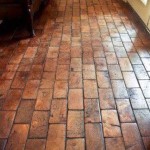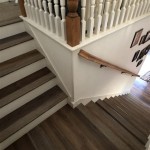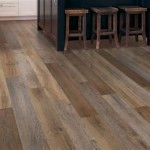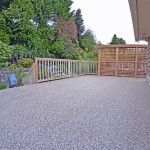What Glue For Vinyl Plank Flooring: A Comprehensive Guide
Vinyl plank flooring has become a popular choice for homeowners and businesses alike, owing to its durability, water resistance, and aesthetic versatility. A crucial aspect of successful vinyl plank flooring installation, particularly for glue-down applications, is selecting the appropriate adhesive. The wrong adhesive can lead to a host of problems, including planks lifting, seams separating, and even damage to the subfloor. This article provides a comprehensive guide to understanding the types of adhesives suitable for vinyl plank flooring, factors influencing adhesive selection, and best practices for application.
The installation method significantly impacts the type of adhesive required. There are two main categories: glue-down and click-lock (or floating) vinyl plank flooring. Click-lock flooring requires no adhesive as the planks mechanically interlock. This guide will focus on glue-down applications, where the adhesive serves as the bond between the vinyl plank and the subfloor.
Types of Adhesives Used for Vinyl Plank Flooring
Several types of adhesives are commonly used for glue-down vinyl plank flooring, each with its own set of properties, advantages, and disadvantages. The optimal choice depends on the specific characteristics of the vinyl plank flooring, the subfloor material, and the environmental conditions.
Acrylic Adhesives: Acrylic adhesives are water-based and known for their low VOC (Volatile Organic Compound) content, making them a more environmentally friendly option. They generally offer good adhesion to a variety of subfloors, including concrete, plywood, and existing resilient flooring. Acrylic adhesives are typically easy to apply and clean up with water. However, they may not be as resistant to moisture as other adhesive types and are generally better suited for residential applications or environments with controlled humidity.
Pressure-Sensitive Adhesives (PSAs): Pressure-sensitive adhesives are designed to form a bond when pressure is applied. They are often used when a repositionable bond is desired, or when installing vinyl plank over an existing floor covering. PSAs are available in both wet-set and dry-set formulations. Wet-set PSAs require the adhesive to be partially dried before the vinyl plank is installed, while dry-set PSAs achieve immediate adhesion upon contact. These adhesives are typically more expensive than acrylic adhesives but offer superior bond strength and moisture resistance. They are a good choice for commercial applications or areas with high foot traffic.
Epoxy Adhesives: Epoxy adhesives are two-part systems that consist of a resin and a hardener. When mixed together, they create a very strong and durable bond that is resistant to moisture, chemicals, and temperature fluctuations. Epoxy adhesives are ideal for demanding environments, such as commercial kitchens, hospitals, and industrial settings, where a high level of performance is required. They are also suitable for installing vinyl plank flooring over concrete subfloors that may be subject to moisture vapor transmission. However, epoxy adhesives are typically more expensive and require more skill to apply than other adhesive types. They also have a shorter working time, meaning the planks must be installed relatively quickly after the adhesive is mixed.
Polyurethane Adhesives: Polyurethane adhesives offer a balance of strength, flexibility, and moisture resistance. They are known for their ability to accommodate movement in the subfloor, which can help prevent cracks and buckles in the vinyl plank flooring. Polyurethane adhesives are suitable for both residential and commercial applications and can be used over a variety of subfloor materials, including concrete, wood, and metal. They have good chemical resistance and low VOC content, making them a versatile and environmentally responsible choice.
Hybrid Adhesives: These adhesives combine the properties of different adhesive chemistries (e.g., polyurethane and silane) to offer enhanced performance characteristics. They often exhibit superior bond strength, flexibility, and moisture resistance compared to single-chemistry adhesives. Hybrid adhesives are a good choice for challenging installations, such as those involving uneven subfloors, high moisture levels, or heavy traffic.
Factors Influencing Adhesive Selection
Choosing the right adhesive for vinyl plank flooring involves careful consideration of several factors, including the type of vinyl plank flooring, the subfloor material, the environmental conditions, and the intended use of the space. Failing to address these factors can lead to installation failures and costly repairs.
Type of Vinyl Plank Flooring: Different vinyl plank flooring products have varying requirements for adhesives. Some manufacturers specify particular adhesive types or brands that are best suited for their products. It is crucial to consult the manufacturer's recommendations before selecting an adhesive. Consider the thickness and construction of the plank, as thicker planks may require a stronger adhesive to prevent movement.
Subfloor Material and Condition: The subfloor material plays a significant role in adhesive selection. Concrete, plywood, OSB (Oriented Strand Board), and existing resilient flooring all have different properties that affect adhesion. Concrete subfloors must be properly cured and free of moisture. Wood subfloors must be structurally sound and level. Existing resilient flooring must be clean, smooth, and well-bonded to the subfloor. The subfloor should also be tested for moisture content, as excessive moisture can interfere with adhesion and lead to mold growth. Consider using a moisture barrier or a moisture-resistant adhesive if the subfloor is prone to dampness.
Environmental Conditions: Temperature and humidity can affect the performance of adhesives. Some adhesives require specific temperature ranges for application and curing. High humidity can slow down the curing process and weaken the bond strength. Refer to the adhesive manufacturer's instructions for recommended environmental conditions. For areas with significant temperature fluctuations, choose an adhesive with good temperature resistance.
Intended Use of the Space: The intended use of the space will influence the required bond strength and durability of the adhesive. High-traffic areas, such as commercial spaces and hallways, require adhesives that can withstand heavy wear and tear. Areas prone to moisture, such as bathrooms and kitchens, require moisture-resistant adhesives. For residential applications, a standard acrylic or polyurethane adhesive may suffice, while commercial applications generally require stronger adhesives like pressure-sensitive or epoxy adhesives.
VOC Content: Volatile Organic Compounds (VOCs) are chemicals that evaporate from adhesives and can contribute to indoor air pollution. Low-VOC adhesives are becoming increasingly popular due to their environmental and health benefits. Consider choosing a low-VOC adhesive if you are concerned about air quality. Many manufacturers now offer adhesives that meet stringent VOC emission standards.
Best Practices for Vinyl Plank Flooring Adhesive Application
Proper adhesive application is essential for a successful vinyl plank flooring installation. Following best practices can ensure a strong, long-lasting bond and minimize the risk of installation failures. These practices include subfloor preparation, adhesive selection, adhesive application techniques, and post-installation care.
Subfloor Preparation: Thorough subfloor preparation is critical for optimal adhesion. This includes cleaning, leveling, and priming the subfloor. Remove all debris, dust, grease, and other contaminants that can interfere with adhesion. Level the subfloor by filling in cracks and imperfections with a self-leveling compound. Prime the subfloor with a primer recommended by the adhesive manufacturer. Priming improves adhesion by creating a more uniform and porous surface.
Adhesive Application Techniques: Follow the adhesive manufacturer's instructions for application techniques, including trowel notch size, open time, and working time. Use the correct trowel notch size to ensure the proper amount of adhesive is applied. Open time refers to the amount of time the adhesive is allowed to sit after application before the vinyl plank is installed. Working time refers to the amount of time the adhesive remains workable after application. Apply the adhesive evenly and consistently across the subfloor to avoid voids and uneven bonding. Avoid applying too much adhesive, as this can lead to squeeze-out and make it difficult to align the planks. Avoid applying too little adhesive, as this can result in weak bonding and plank movement.
Post-Installation Care: After installing the vinyl plank flooring, allow the adhesive to cure completely before subjecting the floor to heavy traffic. Follow the adhesive manufacturer's recommendations for curing time. Protect the floor from moisture and extreme temperatures during the curing process. Regularly clean the floor with a pH-neutral cleaner recommended by the vinyl plank flooring manufacturer. Avoid using abrasive cleaners or harsh chemicals that can damage the floor surface.
Testing and Inspection: Before proceeding with the entire installation, it is wise to conduct a test installation in a small, inconspicuous area. This allows you to evaluate the adhesive's performance and ensure compatibility with the vinyl plank flooring and the subfloor. Periodically inspect the installed floor for any signs of adhesive failure, such as lifting planks or separating seams. Address any issues promptly to prevent further damage. Consult with a professional flooring installer if you are unsure about any aspect of the adhesive selection or application process. Their expertise can help you avoid costly mistakes and ensure a successful installation. Document the adhesive type, brand, and application date for future reference. This information can be helpful if repairs or replacements are needed.
By carefully considering these factors and following best practices, one can select the appropriate adhesive and execute a successful glue-down vinyl plank flooring installation, resulting in a durable, aesthetically pleasing, and long-lasting flooring solution.

What S The Best Glue To Use For Vinyl Flooring Sprayidea

Foam Backed Vinyl Plank Flooring Adhesive Comparison

Choosing The Best Glue For Vinyl Plank Flooring Secret Tips

How To Repair Luxury Vinyl Plank Flooring The Palette Muse

Henry 1 Gallon Vinyl Tile And Plank Flooring Adhesive 32080 At Com

How To Install Glue Down Vinyl Plank

Mapei Ultrabond Eco 373 4 Gallon Vinyl Tile And Plank Multi Purpose Flooring Adhesive 1942315 At Com

Glue Down Vinyl Plank Flooring A Buyer S Guide

Adhesive Vinyl Flooring 4 Ways To Install Planeo

Choosing The Best Glue For Vinyl Plank Flooring Secret Tips
Related Posts








